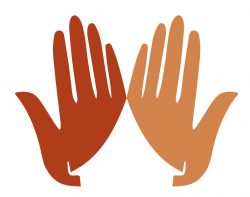There are several excellent systems to help us understand personality types. As most readers of The Satsang magazine will know by now, my own favourite is the Enneagram. However, whatever system is utilised, it is important to realise that basic personality types can have subtle shades, which allow people of similar types to demonstrate some surprisingly different characteristics. In Enneagram thought, three such variants (or instincts) are considered, – they are referred to as self-preservation, one to one, and social instincts. Each of us have all these three, but as we shall see, not at all to the same degree. Usually, one or other of these is dominant, another one might have a slightly lesser influence, but supports the dominant, and the third is usually experienced as a blind spot that we tend not to think about very often.
The instincts themselves are easily understood and are related in human evolution terms to survival. Someone with a ‘self-preservation’ dominant instinct will tend to be motivated to invest time and energy into self-care. They might pay particular attention to physical health and well-being. They may also make sure their finances are kept in order, or might be particularly house proud. In times of crises, people self-preservation instincts will tend look to their own devices to see them through.
The person who has a dominant ‘one to one’ instinct will look out for a close connection to one or perhaps a few people and will invest time and attention into those relationships. To borrow a phrase from Who Wants to be a Millionaire’, such a person might get along in the world by ‘phoning a friend’. The close inner circle or perhaps single confidante is the preferred means of support in difficult times.
Those with a dominant social instinct like to feel the safety and security of the group. They will usually know their place in the group and are most comfortable in that environment. To borrow once again from ‘Who Wants to be a Millionaire’, these people will be those most likely to ‘ask the audience’ in any time of crisis. They might also prefer to have a job where social interaction or teamwork is important.
The ‘blind spot’ that each of us have is the difficult area. One of the goals of investing time in self-awareness is to find balance. Knowing about each these instincts should be a help, but by its very nature, the blind spot is hard to work on, and usually a place we avoid. By way of example, my wife Carol has great difficulty in drawing my attention to the annual tax return – indeed anything of a financial nature. Well, things like this are all so dreadfully dull aren’t they!! It’s fairly obvious to both of us that this is not my dominant instinct, and needs some attention. Here is the rub – it takes discipline.
If you have a one to one blind spot, working to improve this area might mean giving someone a call, developing listening skills, showing more empathy, remembering birthdays or significant events in the lives of those you are getting to know. Those with a blind spot in the social area could perhaps think about showing up in groups with small numbers at first, responding to an invite to join in with something, deliberately joining a special interest group. Introverts sometimes find these activities tiring, so perhaps you could give yourself time limits and make an excuse to give yourself a breather if you need to. Self-awareness and discipline are the key elements – sorry about that!!
Blessings
Warwick

